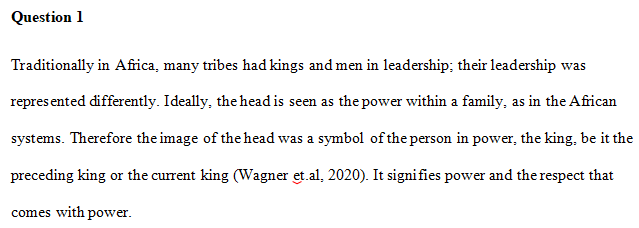Function and Meaning in African Art
Traditional African art is bound by certain cultural restrictions that require that the creators of functional objects include certain themes and motifs in the decorative designs. Within these boundaries there are ideals of beauty that are unique to each culture. For example, in the bronze castings of the heads of the kings of Old Benin the eyes, noses, and lips all seem to have the same shape and proportion. In almost all cultures people are depicted with their eyes wide open as it is deemed to be an aspect of wisdom. In some cultures, sculptures of women are ideally represented with elongated necks and sculptures of people and animals generally display an exaggerated lengthening of the torso or legs which is seen as being extremely elegant. The African artistic aesthetic is also bound by the idea of social and cultural meaning embedded in decoration and adornment. Each type of decoration reflects a unique way of interacting with the natural, spiritual, and social environment whether it is something as complex kente cloth with the stories and status suggested in its intricately woven designs; or something as functional as a Congolese nganga kisi which in many cases is merely a box or bag of magic trinkets that serve to ward off harm; or a mask or costume worn to venerate the ancestors or spirits of the dead, the egun. Write short answers, [3-5 sentences] for each of the questions below. Each answer is worth 25 points toward a maximum score of 125 points. A well-written short answer should identify significant themes addressed in each lesson. Paste your responses in the assignment submission box by the date listed above, but also attach a document file for security and formatting purposes.
Answer Preview

APA Format, 461 words
